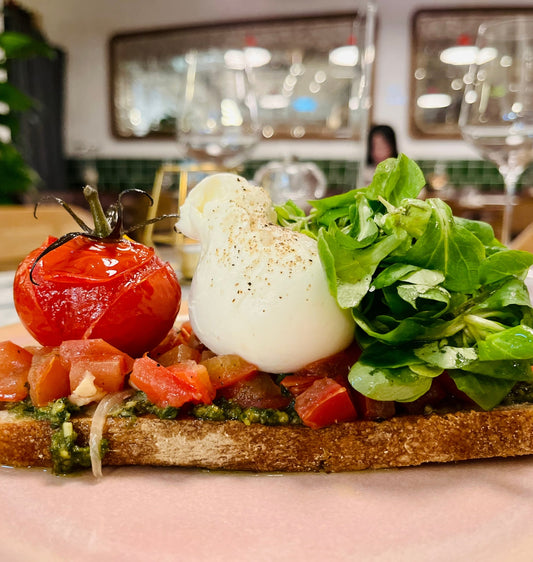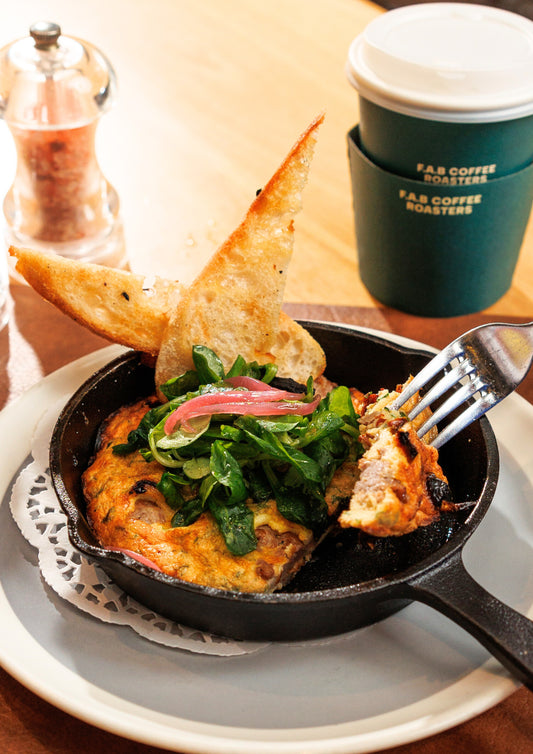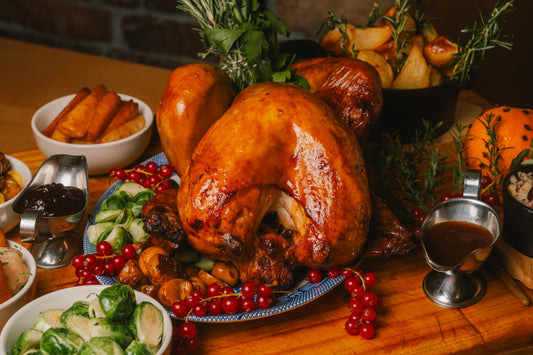
Cooking the Perfect Rib Eye
If there’s one thing we know how to do, it’s cook a steak. Let Chef Gok guide you through the whole process, to achieve a perfect medium-rare rib-eye steak.
You may not be aware, but in addition to personal preference, there are some other factors to consider when deciding on the ‘doneness’ of your steak. Sure, you can order your steak extra rare (sometimes called ‘blue’) to convince your dinner date of your true carnivore credentials, but there are in fact a select group of steaks that are best served rare. And rib-eye is not actually one of them. To find out which ones you should order for that virtually-still-mooing experience, head to our Guide to Cuts of Steak.
The reason we love rib-eye so much is that it is a low working (read: tender) muscle, but it is marbled with the type of flavoursome fat more often found in working cuts of beef. That fat needs a little heat to melt and release its oh-so-addictive flavour. (Think about the difference between the taste of butter straight from the fridge versus melted into a slice of toasted sourdough.) So, it’s a balance. A premium cut ought not to be overcooked. Instead, we’re aiming to char and caramelise the surface, and get just enough heat to the centre of the steak so the fat can do its thing. And thus, we arrive at medium-rare.
That’s the reason the majority of our guests at our restaurants go for medium-rare; they probably didn’t know exactly why, but there it is.
A whole lot of the way great chefs cook is second nature, muscle memory. If we’d asked Chef Gok to write us a recipe, we bet he’d have left out a little flick of the wrist here, some instinctive action there. So, we ordered our rib-eye and watched him like a hawk to see every little thing he did.
It’s all there. Read, internalise, then you’ll be slinging steaks with the best of them.
-
Take your steak out of the fridge, leave it in the paper while it comes to room temperature.
-
Put a pan over a high flame for three to four minutes and allow it to get nice and hot, then turn down to medium.
-
Meanwhile, pat your steak thoroughly dry then sprinkle sea salt and cracked pepper liberally on all sides (don’t forget the edges either).
-
Put about three tablespoons of olive oil in the pan and follow quickly with the steak, four squashed and peeled garlic cloves and a few sprigs of thyme.
-
Cook the steak for one minute on each side, moving it about in the pan. Press it up against the side of your pan to sear the sides of the steak too.
-
Add a heaped tablespoon (or about 50g) of butter.
-
Tilt the pan to collect some melted butter and spoon it over the steak. (This is called nappé-ing, very chefy) Don’t lift the pan too far from the flame though, it needs to stay hot.
-
Carry on for one more minute, lifting the steak slightly to let the butter run under, over and all around it.
-
Remove from the pan and put on a warm plate, pour the pan juices on top and rest for four or five minutes. A board won’t do, the juices will go everywhere.
-
Slice the steak with a sharp knife, pour the juices over once more, sprinkle a few more sea salt flakes (try these Savoury Umami flakes) and serve.



